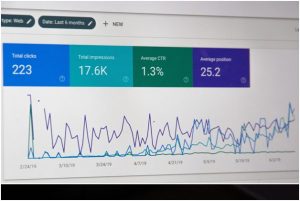Everyone on the internet is talking about the dark web, and there are lots of urban legends about it. But how about dark social? Do you have any idea about it?
Many of you will think that this is like the dark web because the word “web” has just been replaced by social. Maybe some of you are thinking of creepy stories happening in the dark social-the truth is, people should be worried about it, especially the marketers. But what dark social is all about?
What is the Dark Web? Why Should You Care?
Dark social refers to the traffic and online activities that came from private social media channels (e.g. emails, text messages, and messenger apps). These channels are untraceable by analytics tools, and even search engines can not track the traffic going on there. In short, you can’t see the content unless you are a part of a group.
The term was described by Alexis C. Madrigal, in his article, “Dark social: we have the whole history of the web wrong,” which has been published in 2012. In this article, Madrigal said what people see on social media sites like Facebook and Twitter is just the tip of the ‘social’ iceberg. He revealed that most traffic and shares are done via dark social.
Five Facts About Dark Social

Search Engines and Analytics Tools Can’t Track Dark Social
For marketers, it could bring a problem because analytics can’t track the activities. With that, they don’t have data about the activities and behavior of the users.
The common channels where dark social interactions happening are:
- Forwarded emails that look like spam.
- Messaging apps like Facebook Messenger, WhatsApp, Slack, Telegram, and Snapchat
- Private social media communications on Facebook, Twitter, Instagram, etc.
- SMS
The Silent Majority
The silent majority refers to the group of unspecified people who don’t share opinions publicly. Until today, it is a mystery if this group of people has played an important role in the landslide victory of Donald Trump in the 2016 election.
Since these individuals are not expressive with their opinions in public, they may tend to join group chats. In these channels, they can meet people who have the same beliefs and views with them. Just like forums, people who join this channel can share whatever they want (links) and discuss any topics.
Any website visit from a link shared in emails and messaging apps like WhatsApp, Facebook, Slack, etc. is counted as a visit. Since analytics programs can’t monitor the activities in the personal messaging apps, these visits become invisible, instead of being counted as social or referral traffic.
The Dark Social and Dark Web is Not the Same
Although both terms have the same adjectives, they have a different meaning. When people hear “dark web,” they think about hackers, cyber terrorism, and links with malicious content. Meanwhile, the term “dark social” refers to personal communication that is happening “below the radar.”
RadiumOne published The Dark Side of Mobile Sharing in 2016. The article tackled issues such as how Facebook contributed 9% of the on-site shares globally.
Meanwhile, other public social networks are responsible for 7% of the on-site shares globally – it means that the dark social is responsible for a whopping 84% of on-site shares globally. On the other hand, only16% of shares have been done in public. When it comes to numbers of “click backs” on the dark social shares, about 38% comes from desktops, while 62% comes from mobile devices.
Dark Social is a “wake-up call” for Those in Need for More Privacy
Greg Swan and Marc Jensen discussed why people give up some private information in exchange for value in how they communicate at the South by Southwest (SXSW) Interactive festival.
Many marketing specialists are aware that change is constant, especially when it comes to trending topics. However, today, the shift toward personal, private communications through larger social channels becomes stronger because of the Generation Z or GenZ-people born 1996 or later.
There is a rapid change in the activities and behavior on social media platforms because of GenZ. This group of people or this generation prefers more personal, immediate social platforms like Snapchat rather than broadcasting their lives and activities publicly through Facebook and Twitter.
Helpful Tool to Monitor Dark Social Traffic
Although it mentioned earlier that analytics tools couldn’t fetch the root of the traffic, but it did not say that there’s no way, there’s always a match-making platform that can help out. There is a way to monitor dark social traffic through these tools!
Google Analytics (GA)
Surprisingly, GA can give you information about how much traffic you get from dark social. Some visits from messaging apps like Whatsapp are marked as direct because people go directly to the site of their own accord.
So when people click links in email, SMS, or messaging apps, GA considers it as direct traffic. To see these numbers, go to “Audience Tab” and select the “Overview” button. After that, click “Add Segment” and select the “Direct Traffic” option. You may unselect other items and choose only the “Direct Traffic” option.
If you want to go deeper and narrow your research, click the “Behaviour” tab on the left side of the dashboard. Under this tab, select “Site Content” and click “All Pages.”
After that, you will see a search bar, then click on the “advanced” button right next to it. You will see the “Include” button, next to the page button. Change that button to “Exclude.”
After doing the previous steps, add all the easy-to-remember page URLs in the search box because these URLs are the ones people often type to reach your website. Click “Apply” after you have added all such pages.
Now all the pages that people can reach directly have been excluded. GA will only show you the pages that have a difficult URL structure.
There is a brighter side behind dark social because it still contributing direct traffic. To understand further how it works, you better team up with an expert. Sites that have a match-making platform will help you find one.
Finding creative agencies might be overwhelming. Many of them show you portfolios and pitch some ideas. The result, you don’t know which of them will be fit for the job roles.
